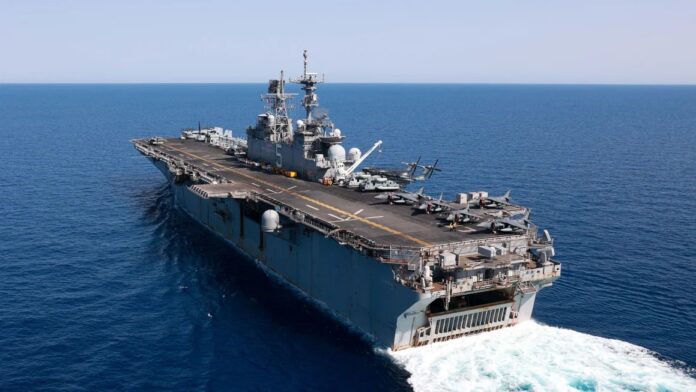In a strategic shift signaling a significant reduction of US military presence in the region, the Marine Rapid Response force stationed in the eastern Mediterranean Sea is expected to return to the United States in the coming weeks, according to two defense officials familiar with the matter.
The departure of the USS Bataan amphibious ready group and the 26th Marine Expeditionary Unit (MEU) marks a notable development in the ongoing geopolitical landscape of the Middle East.
While an exact timeline for their withdrawal remains uncertain, sources indicate that preparations for the journey back home are underway, with the possibility of a reversal contingent on any rapid deterioration of the situation on the ground.
Originally deployed in July and subsequently sent to the region in October, the Marine Rapid Response force has played a crucial role in maintaining stability and readiness amidst escalating tensions, particularly during the Gaza war.
Tasked with capabilities ranging from amphibious operations to special missions, the Marines were primed for potential evacuation operations. However, such a scenario has not materialized as the conflict in Gaza nears its fifth month.
The decision to withdraw the rapid response force underscores a broader recalibration of US military commitments in the region.
Since the October 7 attacks in Israel, the US has maintained a continuous presence of aircraft carriers or amphibious assault ships in the eastern Mediterranean Sea, aimed at deterring actions by Iranian proxies like Hezbollah in Lebanon and mitigating the risk of further escalation.
Recent developments suggest a relative lull in hostilities, with Iranian proxies refraining from attacks on US forces in Iraq and Syria.
This pause follows a spate of assaults, including a drone strike in Jordan that resulted in casualties among American service members. While welcoming the cessation of attacks, Pentagon officials emphasize the resolve to respond decisively to any future threats.
The impending return of the USS Bataan represents a departure from the status quo, marking the first time since October that the eastern Mediterranean Sea will be without a warship capable of operating fighter jets.
The Bataan group, comprising thousands of sailors and Marines along with a formidable arsenal of aircraft, has been a stalwart presence in the region.
However, despite the drawdown of the rapid response force, the US maintains a vigilant posture with assets such as a guided missile destroyer remaining in the area.
Additionally, the USS Dwight D. Eisenhower carrier strike group continues operations in the Red Sea, engaging in targeted strikes against Houthi targets in Yemen and intercepting hostile actions in the maritime domain.
The shifting dynamics in the Middle East have prompted strategic adjustments from US military planners. While recent months witnessed a concentration of forces in response to the Gaza war, the evolving situation necessitates a reevaluation of priorities and resources.
As diplomatic efforts to de-escalate tensions along the Lebanese border progress, the US aims to balance its commitments with the imperative of regional stability.
In conclusion, the imminent departure of the Marine Rapid Response Force signifies a pivotal moment in the ongoing military posture of the United States in the eastern Mediterranean.
Amidst a backdrop of geopolitical complexities and evolving threats, the drawdown reflects a nuanced approach to safeguarding American interests while navigating the delicate balance of power in the region.
This article was created using automation technology and was thoroughly edited and fact-checked by one of our editorial staff members

